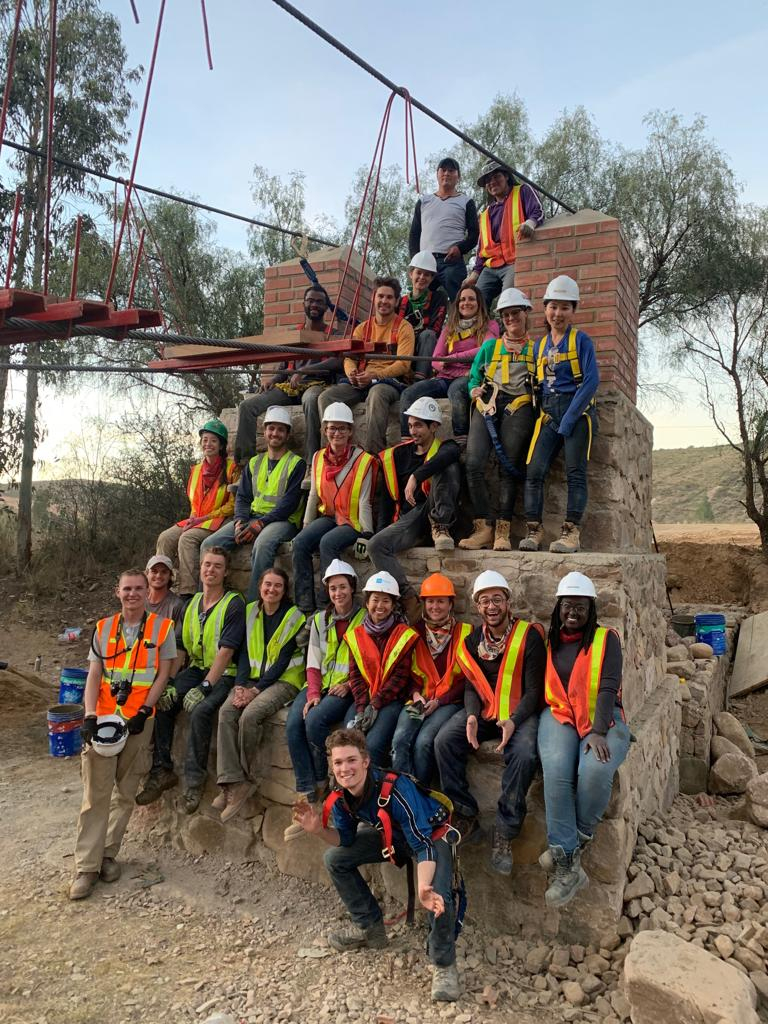
Engineering at Alberta students change lives in their spare time. In this case, they travelled to Bolivia, where they designed and built a bridge to connect a community. (Photo courtesy UAlberta chapter of Engineers in Action.)
(Edmonton) Bridges are perfect examples of the ways engineers improve the quality of life for others. And Engineering at Alberta students have been connecting communities in South America by providing safe passage over treacherous terrain.
This spring, the students completed a 35-day bridge-building project in a remote Bolivian village between final exams and their graduation ceremonies.
As members of Engineers In Action (EIA), the students' mandate is to connect communities by designing and building foot bridges.
"A lot of people in Bolivia are separated by rivers and ravines, and can't get access to healthcare, education, the market, or their families. We try to connect them so they can live their best lives," said Georgia Dunn, a project manager and fundraiser.
Dunn took part in bridge builds in Bolivia in 2017 and 2018-but this year's project was more challenging and stressful than previous expeditions. First, the team was re-assigned from one village to another. And before the project could get even off the ground, heavy rains washed out an access road connecting people living on both sides of the river. This underscored the urgent need for a safe bridge, but also slowed the project.
"The biggest issue was getting materials to the other side of the river," said Dunn. "Luckily, the municipality had an excavator that they were able to bring to pile dirt onto the road, and then bring stuff over. But, that had to be redone every time it rained."
The result? The project was set back for three days.
The challenges continued. When the students first arrived at the construction site, they discovered a buried concrete wall that wasn't included in any of the site plans. Rochelle De Omania, a project manager and design lead, had to design on the fly to ensure the bridge's integrity.
Plans to use a standard abutment-critical endpoints that absorb the forces placed on the bridge-had to change. De Omania and fellow UAlberta engineering student Imisi Olagesin modified the abutment and the bridge at the last minute.
In the end, the team designed and built a footbridge with hand cables at 4.5 metres above ground, spanning 32 metres across a river.
Unfortunately, the delays meant the team had to fly home two days before the project's completion. A team of American students helping the UAlberta team completed the job. Not being able to see the project through to the end and celebrate the bridge's opening with members of the community was disappointing, but the students are taking a philosophical view.
"It was never about us to begin with," said De Omania. "We were just the ones helping the community there. At the end of the day, it's all about them.
"Regardless if we were the ones who finished it or not, it will still serve the community, and they are still going to be able to use that bridge for years and years to come."
"It didn't matter whether we finished or someone else finished," said Dunn. "What I learned was that even the best-laid plans are going to go awry, and you've just got to go with the flow."
Team member Nikita Nineza, a third-year civil engineering student, says the experience reminded her why she entered engineering. Born and raised in Brundi, Nineza plans to return home with her engineering degree to help build better infrastructure.
"For me, I joined civil engineering just so I can learn how to build buildings and infrastructures. In my third year, I was talking to Georgia, and she told me about the program," Nineza said. "I realized, 'Oh, hey, this is why you joined this program, you should definitely go and learn on-site.'
"It was also helpful working with a non-profit organization, because in the future, it's something I want to do long term."